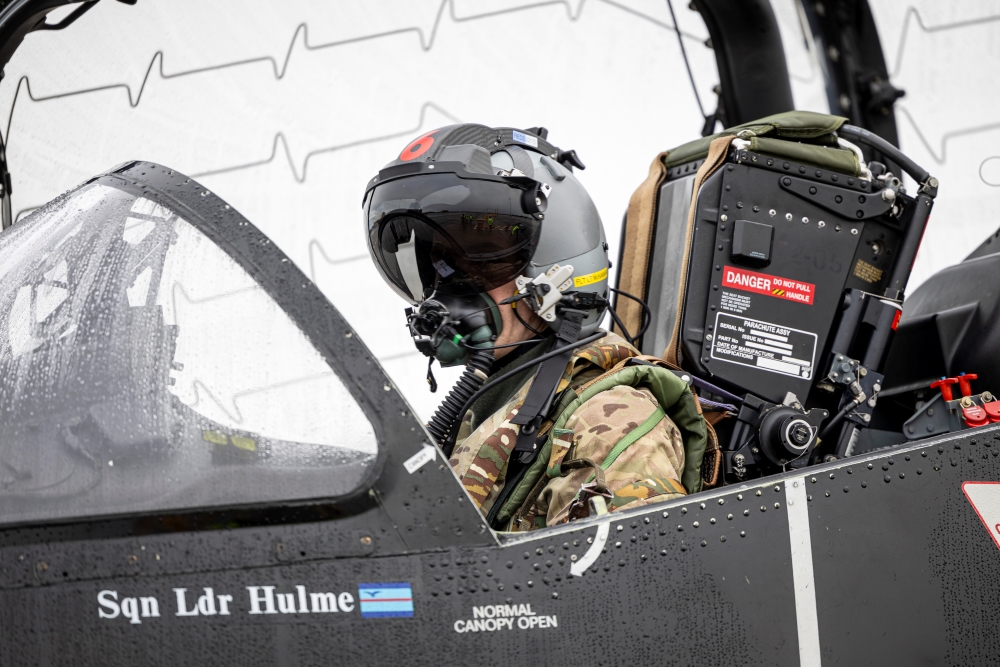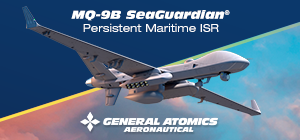
The Royal Air Force, BAE Systems, Red 6 and DE&S have completed in-flight demonstrations of Red 6’s ATARS (Advanced Tactical Augmented Reality Systems) augmented reality system for training on the BAE HAWK T2 advanced jet trainer at the RAF base of Valley, in Wales.
ATARS uses projected, realistic, full-color imagery on the helmet mounted visor of the pilot to enable advanced and safe training series in which crews can identify, engage and defeat virtual adversaries programmed to act and react as in real combat, and cooperate with synthetic support aircraft whilst airborne.
A single jet fitted with ATARS can effectively train as if it was part of a large formation of aircraft fighting against Aggressors, without any of the other aircraft needing to actually be in the air.
Crews training with virtual reality on a HAWK T2 able to practice advanced air and ground combat, formation flying or air to air refuelling with zero in-air collision risks and with a great reduction in the demand for live assets, achieving great savings and fuel efficiencies while achieving more training per flying hour for the trainee.
Red 6 is a company registered in the US but founded and led by an ex-RAF fighter pilot, Dan Robinson, who years ago started pondering the problem of how to reduce training costs while living trainees more, not less, opportunity for dissimilar air combat training and more experience in advanced, risky evolutions such as air to air refuelling, formation flying or even carrier landings.
In this he was “inspired” by witnessing firsthand the enormous cost the USAF face sto provide realistic training to F-22 pilots in particular. Robinson served on the F-22 RAPTORs on exchange. The company he set up, received a development grant from the USAF’s AFWERX tech incubator in 2019, followed in 2021 by a 5-year, $70m contract to accelerate the use of AR with the US Air Force with the goal of incorporating AR into the T-38 Advanced Trainer.
In 2022, Red 6 concluded agreements with Boeing and BAE to look at the integration of ATARS respectively onto the T-7A RED HAWK and F-15EX and on the HAWK T2. Red 6 carried out in-flight development and testing of its technology primarily using a couple of Berkut 540 light aircraft.
The Royal Air Force and DE&S signed a contract with Red 6 for this demonstration back in July 2024. ATARS uses a lightweight, colour, helmet mounted display (HMD) that can inject 3D friendly and enemy aircraft, SAMs, missile trails and even explosions into the real world for the pilot to fly and fight against. It has great potential in a wide range of training scenarios. Not only it could drive significant savings by reducing the need for real life Aggressor jets in air combat training, but it could dramatically expand the range of training carried on trainer jets, reducing in proportion the need for such activities in the Operational Conversion Units flying the even more expensive frontline jets.
For BAE Systems, integration of Augmented Reality into the HAWK T2 is one of a series of initiatives taken to modernize the advanced trainer and keep it relevant into the future. The Royal Air Force has recently signalled interest in potentially replacing HAWK T2 early rather than put it through a mid-life upgrade. The Service is particularly concerned by the current, enduring low availability of its HAWK T2 jets, which is however primarily driven by a problem with the Safran-Rolls Royce ADOUR engine. Specifically, in March 2022, Rolls Royce reported that “significant technical issues” had been found in the Low Pressure Compressor (Module 01) of the Adour MK951 engine.
The 4,000 hour planned design life of each engine had to be reduced to a clearance of 1700 hours as a consequence. This had a serious impact reducing the average number of serviceable jets available each day to just 8 throughout FY 2022/2023 and a revised forecasted outturn flying rate of approximately 3700 flying hours, just about 50% of the contracted amount.
To mitigate the impact on the training pipeline, a small number of RAF pilots (11 in total as of March 2024) have been sent to the US and to the International Flight Training School at Decimomannu, in Italy. Recovery is proving slow, with the situation in early 2024 having only partially improved, with daily availability fluctuating between 7 and 11 jets (out of 28).
While not unexpected (BAE had warned in early 2023 that engine availability would only look up again from 2024/25) this has led the Chief of the Air Staff to publicly indicate early replacement of T2 as a “wish”. The planned out of service date for the Hawk T2 aircraft is 2040, while the remaining small fleet of legacy HAWK T1, all assigned to the RED ARROWS both for displays and training support tasks, is supposed to leave service by 2030.
Defence Secretary Jon Healey has been shown the TAI HURJET advanced training while in visit to Turkey, and this assumes greater significance than it normally would in light of the stated RAF “wish” about T2 and the fact that the UK expects to soon sign an export deal for 40 Eurofighter TYPHOON to Turkey.








.png)
